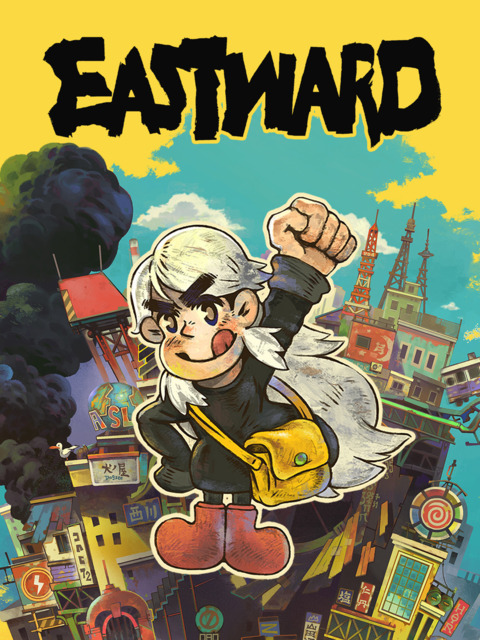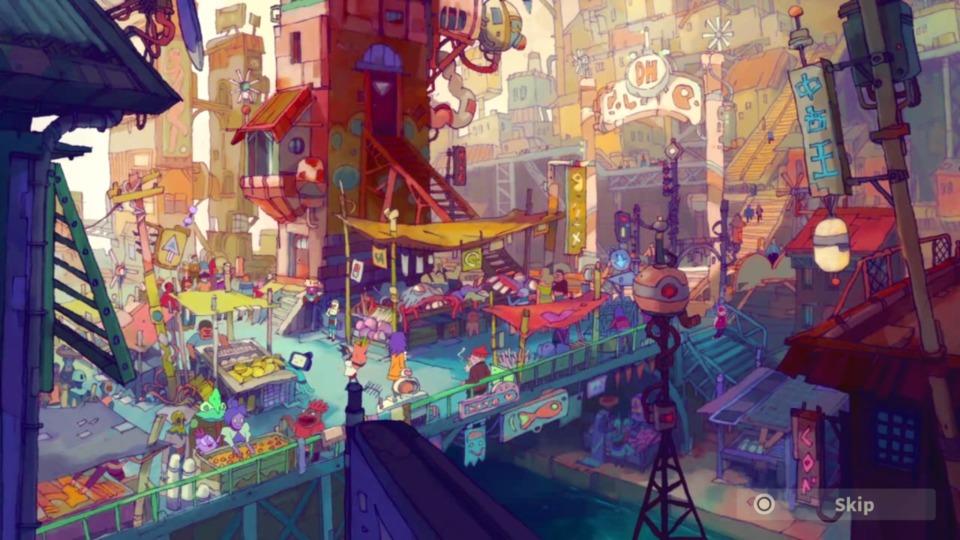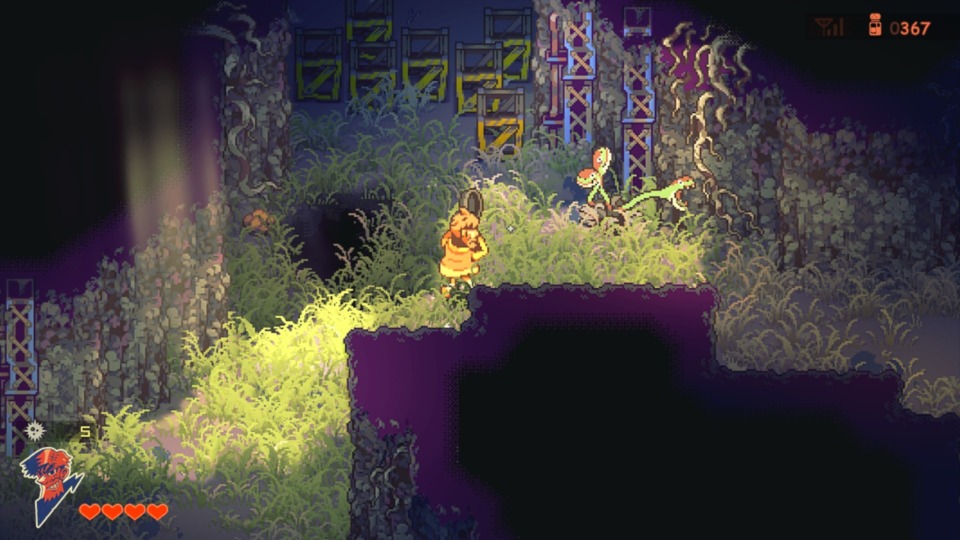Indie Game of the Week 306: Eastward
By Mento 1 Comments

This week we'll be covering Eastward, by Chinese developers Pixpil. Not to be confused with Eastwood— the arcade maze game based on the ornery actor's life that I kept getting lost in, even after going any which way I could—Eastward is a game that feels stylistically and narratively inspired by Mother 3 but mechanically inspired by the Legend of Zelda games which, honestly, is a promising combo right out the gate. Set in a post-apocalyptic world it concerns John, a taciturn salvager working in the subterranean town of Potcrock, and Sam, a cheerful if enigmatic girl that John found suspended in a vat deep below the world. For various reasons the two find themselves travelling across the surface world on a rickety train relying on each other and the oddball strangers they meet for survival.
I originally figured the game was some kind of RPG but Zelda's a much closer analogue, given it uses a familar top-down perspective and the only "level-ups" are new items, weapon upgrades, and health containers. John starts with a humble frying pan as a weapon which is capable of rapid weak swings and a stronger charge attack. The charge attack also has the benefit of having some weight behind it, allowing it to activate switches and launch objects, both of which are involved with many of the dungeon puzzles early on. Sam, meanwhile, has her own methods of attack though they've been largely pacifistic so far: she can enclose enemies in bubbles that won't harm them but will freeze them in place, which makes it easier for John to then finish them off. Dungeons have one or both of them navigating rooms comprised of dimly-lit pre-apocalypse shopping malls and office spaces or natural cave networks as the story mandates, with hub-like town areas offering a place to buy healing consumables, cook your own with the ingredients you've found, or take a spin on a gacha collectible machine or an old arcade RPG for which the gacha prizes lend a small advantage (not unlike amiibos). I haven't progressed too far in said RPG yet—it's basically like an older Dragon Quest with a slight randomization aspect and a pretty strict game-wide time-limit, so there's a luck factor that the gacha prizes significantly help with—but it's kinda neat that it's there, even if I can't see right now how it might benefit the main quest in any way.

Given the Mother 3 comparison, the many main and ancillary characters and their curious if relatable habits and quirks are what makes a game like this shine. Sam in particular is very cute, and part of that appeal is her adoring relationship with her foster father John (though she rarely refers to him as such). You can see this dynamic play out whenever the duo successfully beat a boss/mini-boss or find a key item: John will pump his fist in the air in victory while Sam giddily stomps around for a while and raises both her arms before eventually copying his pose exactly. The familial relationship is tested by Sam's role in the story as a magically-enhanced ingénue with the usual lofty destiny to fulfil that frequently puts her in peril, so it sorta reminds me of the original Nier (or perhaps the recent God of War games) in how much of the stoic protagonist's characterization only comes through via the interactions with those closest to him and those that threaten same. Outside the central dynamic there's recurring characters and one-off weirdos that lend some personality to wherever the current location might be, and the pixel art especially with regards to the environments and buildings is exceptional stuff. The game's really pretty even when most of the surrounding geography looks like it's barely holding together, given how the post-apocalypse has forced everyone to use whatever furniture and tools they can regardless of its state of decay, and it makes the natural environments stand out all the more: I particularly like how the tall grass looks in some outdoor areas and the plentiful use of natural and unnatural lighting.
Eastward does still have a number of pointless annoyances, many of which are baked into its largely linear design. Since the story shepherds you from one zone to the next with no means to backtrack to earlier areas or dungeons there's much that becomes permanently missable, including a very finite number of upgrade materials and collectibles related to achievements. The devs apparently put a chapter select for any desired post-game sweep up but by then most of the upgrades are no longer necessary. I've just about got my FOMO under control these days but never knowing if this is the last time I'll be able to shop at this vendor before the story kicks in and sends me on to newer pastures was a minor stress factor throughout. As too is how vendors don't seem to restock all that often and they refuse to sell their full inventories on any given visit, so if you wanted something specific you're either forced to run many screens away and come back and hope that resets everything or just shrug and accept that something has been permanently lost for that playthrough since it didn't come up the handful of times that vendor was conveniently available. Aggravating and unnecessary, but an accidental by-product to what is otherwise a positive narrative progression that constantly has you guessing about safe havens and sudden catastrophes.

I'm right at the start of Chapter 3 now (about a quarter of the way through perhaps? It's a long game, turns out) and I'm totally sold on letting the story lead me where it may, given how the previous chapter ended. It's the type of narrative that's going to give you more questions than answers for a spell all the while delivering some very human interactions between its cast members that has you caring for them and their fates. I've got a couple non-spoiler guides open for all the missable business so I've alleviated that source of strife for the time being, and I'm looking forward to exploring wherever I might be heading next. As long as it can keep up this narrative thrust and this slowly creeping mechanical complexity for its dungeon puzzles and challenges I think we'll be golden for the foreseeable future.
Rating: 4 out of 5.
Post-Playthrough Edit: Well, it lost me in a little in the middle there with its monkey train and time loop business, but ended strong. I was very much on the money about letting this narrative carry you along in its flow; however, collectible/achievement fans can be assured to know there's a post-game chapter select if you missed anything. Likewise, if you wanted to play that Earth Born game-in-a-game again there's an option on the start menu once the main game is complete. I'm still a little torn about funneling you along and missing out on items but I suppose it was a necessary evil. Excellent game and a contender for Best Story for its year. (I'm even getting into Earth Born a little more now that I've figured it out: it's an interesting run-based spin on DQ-style 8-bit RPGs that could easily stand alone as its own thing.)
| < Back to 305: Bugsnax | 001-100 | 101-200 | 201-300 | > Forward to 307: Prodeus |
